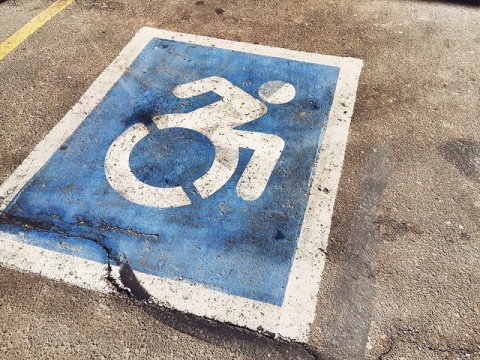Future City Lab: Accessible City I
Lesson One: Neighborhood Walk
Interdisciplinary

Time Estimate: 90 minutes
Connection to Future City Lab: Living Together: How can we foster a more inclusive city?
Objectives:
Students will:
-
understand Universal Design guidelines and expectations
-
evaluate accessibility in our existing communities
-
record their observations and analysis as neighborhood research
Materials:
-
Neighborhood Walk Worksheet
-
Student journal or provided worksheet
Standards:
- CCSS.ELA-LITERACY.CCRA.SL.2: Integrate and evaluate information presented in diverse media and formats, including visually, quantitatively, and orally.
- CCSS.ELA-LITERACY.CCRA.SL.4: Present information, findings, and supporting evidence such that listeners can follow the line of reasoning and the organization, development, and style are appropriate to task, purpose, and audience.
- CCSS.ELA-LITERACY.CCRA.W.7: Conduct short as well as more sustained research projects based on focused questions, demonstrating understanding of the subject under investigation.
- Social Justice Standards: Justice 12 JU.6-8.12 I can recognize and describe unfairness and injustice in many forms including attitudes, speech, behaviors, practices, and laws.
Guiding Question:
-
How can we design communities that ensure accessibility for all user groups?
- Do Now: Turn and Talk (5 mins)
- Vocabulary Review (5 mins)
- Neighborhood Walk (60 minutes)
- Conclusion (20 minutes)
Procedures
Ask:
What is your favorite neighborhood spot? (where you like to go, hang out with friends, visit, etc.)
How do you get there? (transportation)
Is it pretty easy for anyone in your neighborhood to get there? Spend time there?
Universal design: ideas, plans, and designs that produce buildings, products and environments that are accessible to older people, people without disabilities, and people with disabilities. [Usable to the greatest extent possible by everyone.]
From http://universaldesign.ie/What-is-Universal-Design/: Universal Design is the design and composition of an environment so that it can be accessed, understood and used to the greatest extent possible by all people regardless of their age, size, ability or disability. An environment (or any building, product, or service in that environment) should be designed to meet the needs of all people who wish to use it. This is not a special requirement, for the benefit of only a minority of the population. It is a fundamental condition of good design. If an environment is accessible, usable, convenient and a pleasure to use, everyone benefits. By considering the diverse needs and abilities of all throughout the design process, universal design creates products, services and environments that meet peoples' needs. Simply put, universal design is good design.
Accessible: able to be reached or entered
As students walk, they will observe and analyze storefronts, sidewalks, and modes of transportation for accessibility. The walk should include evaluating at least one subway station. (Modification: If your neighborhood does not utilize a subway system, try to include at least one form of public transportation. If this is also not part of your neighborhood infrastructure, adapt the lesson for accessibility of public buildings like schools, stores, museums, etc.)
Students should make observations of at least eight different public spaces that they see.
Prompt: For each built space you analyze, consider: Is it accessible for all user groups? (Consider parents with children in strollers, those who use wheelchairs or scooters as transportation, people with injuries who are temporarily using crutches or canes, and the elderly.) Why or why not? Justify your answer through description and/or sketching.
Observations and analysis can be recorded in the student’s journal, the provided worksheet, or any other form of note-taking utilized by the class. Students could also take pictures using classroom cameras or smartphones.
Students will complete the conclusion portion of their worksheet. They will be prompted to think about why they may or may not have thought about accessibility previously. Consider allowing share-out time to discuss as a class, either at the end of the lesson or as part of a review at a later time.
Additional Resources
Universal Design Definition and examples of barriers: https://www.cdc.gov/healthyplaces/healthtopics/accessibility.htm
Video clips from When I Walk: http://www.pbs.org/pov/wheniwalk/
#oneNYC: http://www1.nyc.gov/html/onenyc/about.html
Fieldtrips: This content is inspired by the Future City Lab gallery in the Museum’s flagship exhibition, New York at Its Core. If possible, consider bringing your students on a fieldtrip! Visit http://mcny.org/education/field-trips to find out more.
Acknowledgements
This series of lesson plans for New York at Its Core was developed in conjunction with a focus group of New York City public school teachers: Joy Canning, Max Chomet, Vassili Frantzis, Jessica Lam, Patty Ng, and Patricia Schultz.
This project was made possible in part by the Institute of Museum and Library Services.
The views, findings, conclusions or recommendations expressed in these lessons do not necessarily represent those of the Institute of Museum and Library Services.

